Spotting Red Flags in TPO and PVC Commercial Roofing
December , 2023 | 6 min. read

Navigating the world of commercial roofing can feel overwhelming, especially when you’re not a roofing expert. Your business is your pride and joy, so trusting someone else with something as important as your roof isn’t easy. All that talk about TPO and PVC might sound like a different language.
It’s frustrating when a contractor shows up and rattles off roofing jargon you don’t understand. TPO? PVC? What does it all mean?
At RoofCrafters, we get it. Running a business is hard enough without the added stress of figuring out roofing problems. With over 30 years of experience in commercial roofing, we’ve heard from many owners and managers who felt left in the dark because no one took the time to explain things to them.
We’re here to change that. We want you to feel confident about your commercial roof, even before the contractor arrives. If you’ve noticed potential issues with your TPO or PVC roof and aren’t sure what to do, you’re in the right place. In this article, we’ll break down the basics of TPO and PVC roofing, plus key red flags to watch for. Let’s dive in!
Understanding TPO Roofs: The Essentials
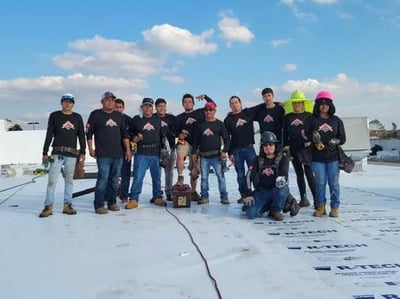
Before we get into the red flags, let’s talk about what TPO and PVC roofs are and what sets them apart!
TPO, or thermoplastic polyolefin (hence the abbreviation), is a single-ply membrane commonly used on commercial roofs, though it sometimes shows up in residential projects, too. Made from ethylene propylene rubber and polypropylene, TPO’s white color helps reflect heat, keeping your building cooler. It’s great at resisting mold, impact damage, and debris, making it an excellent choice for strip malls or warehouses.
PVC, or polyvinyl chloride, is similar to TPO in that it’s also a white, heat-reflecting membrane. Both belong to the thermoplastic, single-ply family, but PVC’s chemical makeup gives it superior resistance to grease and chemicals, which is why it’s the go-to for restaurants or malls with food courts.
Uncovering the Basics of PVC Roofing for Commercial Buildings
PVC or polyvinyl chloride is not much different from TPO. It’s also a white, heat-reflecting membrane that is used primarily for commercial properties. TPO and PVC both belong to the thermoplastic, single-ply family, but what makes them different is the chemical compositions in their bases.
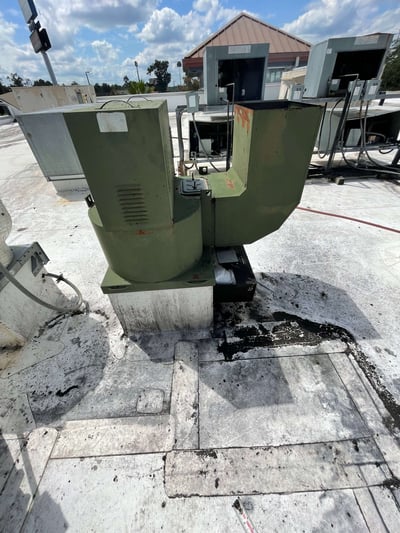
PVC is composed of ethylene and chlorine. Both TPO and PVC are incredibly durable. PVC on the other hand has greater chemical resistance, making it the frontrunner when it comes to restaurants, malls with food courts, or any other building with grease traps on the roof.
Identifying Key Red Flags in TPO and PVC Roofing Systems
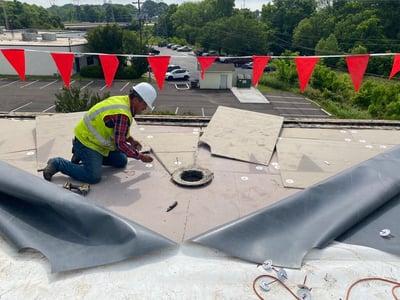
Despite their differences, TPO and PVC roofs often share the same red flags. These include:
- Water pooling
- Mold
- Ceiling moisture
- Rot
- Improper insulation
Addressing Water Pooling Issues on TPO and PVC Flat Roofs
When it comes to flat roofs using TPO and PVC membranes, the number one most common red flag is water pooling. After a big storm or even light rain, if you see pooling water on top of your roof, you’ll want to get in contact with a roofer as soon as possible. The excess weight from the water will eventually cause damage to the structure of your roof, not just your roof itself, making this a pricey problem to fix. So, be sure to be diligent about pooling water.
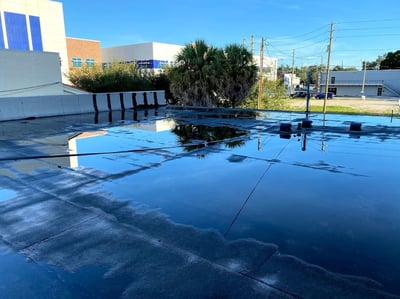
It’s also important to note that the location of the water may not always be its source. Water stains near a window won’t always mean they came from the window itself, and the condensation near the leaky pipe may not even be the source either. Water is sneaky, and likes to travel the path of least resistance. That being said, if you have a flat roof and are starting to see water inside of your building, there’s a good chance it’s coming from your roof.
Tackling Mold Issues: A Key Indicator of Roofing Problems
With moisture inside of your building comes mold and mildew. Mold needs water to grow, and spreads like wildfire when paired with a roofing issue. Its presence behind or even on walls is a major roofing red flag and is a telltale sign that you need professional roofing assistance.
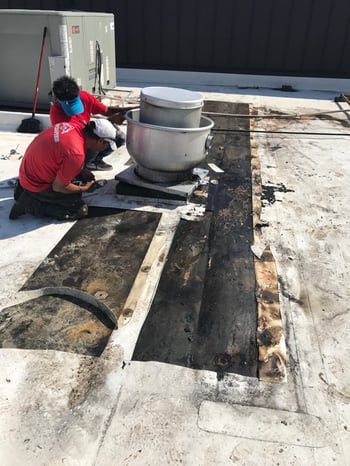
Although this problem could be the result of a plumbing problem, most often, water and mold are entering your walls through your flat roof.
Identifying Ceiling Moisture: Distinguishing Roofing Concerns from Other Causes
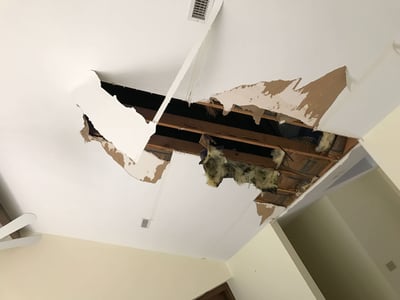
Ceiling moisture is not always a red flag when it comes to TPO and PVC roofing. Oftentimes, condensation on the ceiling could be caused by heat, air conditioning, and other ventilation problems. So, if you see moisture on your ceiling, don’t panic. However, if you tend to see moisture frequently on the top floor of your building, it could be caused by a roof leak.
Recognizing Rot as a Consequence of Roofing Issues
When water, moisture, and mold come together, what do they make? No, that’s not the beginning of a cheesy joke, I promise. These 3 elements combined create rot, which is no joke. Some commercial buildings have unused areas with little to no traffic at any given time, so water, moisture, and mold can go unnoticed for quite some time.
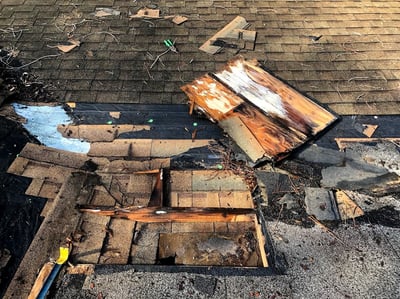
If you find rot in your building combined with these 3 other factors, there’s a high probability that it’s coming from your TPO or PVC roof.
When to Repair or Replace Your TPO or PVC Roof
You now know all about the warning signs for TPO and PVC roofs. This means you're ready to make smart choices if you need a roof repair or replacement. But, if you're seeing any of the red flags we talked about in your commercial building, it's important to talk to a professional roofer right away.
Finding the right person for your roofing job can be tough. To help you out, we've got a handy guide called “The Top 10 Checklist." It's a list of 10 important questions to ask before you hire a roofing contractor. This checklist will help you make sure the roofing company does a great job and takes care of your TPO or PVC roof the right way.
At RoofCrafters, we're pros at working with TPO and PVC roofs, and we offer some of the best warranties around. So, don't wait – get in touch with us to set up a roof check-up with our skilled team. And if you want more info, our learning center has lots of great stuff to read, like “How to Find the Right Roofing Contractor.” This will help you learn more about choosing the best roofer for your project.
My name is Anthony, and I am the lead estimator of RoofCrafters’ Georgia/South Carolina division. The roof is the most important part of a structure, and people count on that to protect themselves and their families. That is one of the many reasons why I love my job and enjoy coming to work every day. The continuous training, honesty, and providing the customer with the Roofcrafters experience is what makes me the best in the business.


